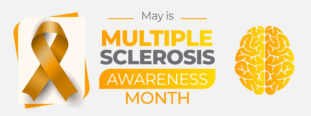The Great MS Meds Survey – Part 4
What people say about their MS medication – Oral therapies
The Great MS Meds survey asked people about their MS treatment and what their experience has been. So let’s look at what the survey respondents typically said about oral therapies, which are taken by the largest group of people. (For more on the survey, see also Part 1, Part 2 and Part 3 in this series.)
Aubagio: This medication is a pill that is most often prescribed earlier in the treatment course. Overall. 56% of respondents taking Aubagio have been living with MS for 5 years or less, and 85% have been on treatment for the same amount of time. Two-thirds are currently employed. However, 40% of people on Aubagio were diagnosed 6-20 years ago, suggesting that many put off starting treatment for many years. For 44%, Aubagio was their first drug; the remaining 56% had started with another treatment, most commonly Rebif or Copaxone. The main reason for switching from one of the injectables to Aubagio was problem side effects, although a few people found that an injectable wasn’t effective.
What do people like about Aubagio? It’s a once-a-day pill, which people find is simple and easy to take. People also mentioned that they have minimal side effects with the drug. One side effect some people mentioned is hair thinning. Here is what one person said about that: “The only side effect was hair loss from months 3-5, which has corrected itself and regrown,” said a woman in her fifties living with MS for the past two years. “The minimizing of lesions and the prevention of progression are the biggest positives.”
Advice to others:
- “It’s a good treatment if you’re working.”
- “Take it with food at the beginning. Make sure to take it at the same time everyday.”
- “The best option for minimal side effects.”
- “This has really been a wonderful medication and my last MRI showed improvement!”
- “Do it!”
Tecfidera: This is the other front-line oral therapy. Compared to the Aubagio group, respondents taking Tecfidera had been living longer with MS (21% were diagnosed in the past 5 years); despite this, almost everyone (91%) had been on treatment for no more than 5 years. About 50% were employed. About one-third had never taken a treatment other than Tecfidera, one-third had taken one previous drug and one-third had taken two previous drugs, mostly Rebif and Copaxone. However, in contrast to Aubagio switches, most people switched to Tecfidera from an injectable because their previous drug wasn’t working, although side effects and injection problems were common complaints.
The reason people like Tecfidera – mentioned by everyone who responded – is that it’s a pill (and not a needle!), so it’s easy to take. The most common side effect cited was flushing, with some reporting upset stomach and nausea. One person expressed concerns about low white-cell counts. “[I’m] feeling that I should be careful around sick people, or picking up germs that could make me unwell and make my compromised immune system work harder.”
Advice to others:
- “It’s better than giving yourself a needle every week! Two pills, twice per day – no sweat!”
- “It’s a great treatment if you can tolerate it. It took me six weeks to adjust.”
- “Make sure you have a meal before taking it.”
- “Keep your hands clean and away from your face. Don’t live in a bubble, but be cautious being around sick people or in places where you may get sick.”
- “No major side effects. Give it a try.”
Gilenya: This medication is typically used in people with more severe MS – either from the outset, or after it’s shown that another medication isn’t doing the job. People taking Gilenya are more of a mixed population – varying ages (50% younger than 40, 50% older), students as well as retired persons, and living with MS for different durations (one-third less than 5 years, one-third 6-10 years, one-third 11-20 years). However, most have not been on treatment for very long (94% for 5 years or less). Gilenya is most often used after another medication, which was reflected in the survey: 88% said they had taken a prior therapy, and most had taken two or more therapies. Almost all respondents said they switched to Gilenya because their previous treatments weren’t effective, although a few people said they developed severe side effects while taking an injectable.
As with the other oral medications, people said they liked taking Gilenya because it’s a pill. A few said they could tolerate it well. One person commented that she felt she had more energy and could now exercise six times a week. Another said she hasn’t had a relapse since starting Gilenya three years ago. A few people had some complaints, such as headaches, rashes, and more frequent colds. Gilenya requires a 6-hour observation period for the first dose, and one person commented that this initial monitoring was a bit intimidating.
But people tended to view the broader context: their MS was generally more severe and Gilenya provided a solution. “I live alone and my tremors made it impossible to give myself injections,” one person wrote. “I’ve done well on Gilenya with no new lesions.” Another commented: “My MRI appeared aggressive and Gilenya has been shown to be more effective than the first-line therapy drugs.”
Advice to others:
- “You’ll love it compared to injections.”
- “It gets easier over time.”
- “It gives you more energy to get through your day – helps with exhaustion.”
- “Gilenya is a great drug and I haven’t experienced any side effects.”
These responses may give a flavour of what people’s experience with treatment has been. Of course, how a person responds, and how well they tolerate a drug, is a very individual thing, so your experience may differ from what we found in the Great MS Meds Survey. Selecting the right therapy can be difficult, and will be determined by many factors – the severity of your MS, your doctor’s preference for certain medications, potential side effects, and what you feel you’ll be able to incorporate into your lifestyle. The first choice may not be the best choice for your circumstances, but fortunately there are many treatment options available.
Part 1 of the survey results
Part 2 of the survey results
Part 3 of the survey results
Part 5 of the survey results
Share this article
Facebook Twitter pin it! Email
Related Posts
Back





